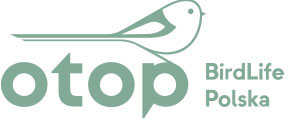Why do we apply criteria for IBA identification?
Bird sites are identified using a set of standardised criteria, developed by BirdLife International. The criteria are based on the current scientific knowledge on the population size and distribution of each species, as well as on their conservation status. Thanks to this approach, only the sites that are the most crucial for the conservation of a given species are indicated as IBAs. Importantly, these sites are identified in the same way in all the countries where the species is present, which allows comprehensive protection. Using a set of the same, standardised criteria across the countries also facilitates comparison of sites and their relative importance for bird conservation, both internationally and globally. That the sites are identified with criteria based on quantitative data, facilitates tracking temporal population changes of a species and regular check of the significance of a given site for bird conservation.
Species considered in bird site identification
Bird sites are identified only for those species that are regularly found in a given region. Rare or threatened species that are irregular or vagrant visitors cannot qualify a site as an IBA. The species for which IBA sites are identified include those that are threatened with extinction globally or regionally; and those that are potentially threatened because during one of their life cycle stages (breeding, migration, wintering and moulting) they aggregate in selected places or habitats.
Specifically, the species that qualify a site as an IBA belong to one of the four following groups:
- globally threatened species according to IUCN/ BirdLife International
- species threatened in the EU, listed in Annex I to the Birds Directive (Directive of the Council 79/409/EC).
- species of special concern at the European level (SPEC) and species not threatened in Europe but with the breeding population concentrated in Europe (non-SPECE species).
- migratory species – not listed in Annex I to the Birds Directive, to which article 4.2 of the Directive applies

